#Portugal UNESCO sites
Text
Portugal: Experience The Magic – Top 10 Fairy-Tale Locations You Need To See
#Algarve beaches#Aveiro#Aveiro canal tours#Azores nature trips#Best places in Portugal#Douro Valley vineyards#El Alame#Explore Monsanto#Fairy-tale locations in Portugal#Historical sites in Portugal#Lamego#Laurisilva Forest#Madeira forest hikes#Monsanto#Óbidos#Óbidos sightseeing#Pena Palace#Portugal for families#Portugal hidden gems#Portugal itinerary ideas#Portugal travel guide#Portugal UNESCO sites#Quinta da Regaleira#Quinta da Regaleira tours#Romantic spots in Portugal#Sintra#Sintra travel tips#The Azores#The Coast of Algarve#Top destinations in Portugal
2 notes
·
View notes
Text

Palacio Nacional de Mafra / Portugal (by Suzanne Tucker).
#portugal#visit portugal#mafra palace#architecture#baroque#royal palace#lusitania#unesco heritage site
1K notes
·
View notes
Photo

Évora
31 notes
·
View notes
Text
Quinta da Regaleira

This site looks ancient but it's actually a 20th Century villa that was constructed in the early 1900s.
The aesthetic harkens back to a much earlier age with its stonework mimicking old castles of the region and extensive layout filled with unique (and sometimes hidden) features.
This spiral staircase on the site descends into "The Initiation Well," a structure nearly ninety feet deep with no clear purpose. The number of esoteric and alchemical symbols incorporated into the Quinta inspires speculation that this, and other areas, may have been used for occult practices.

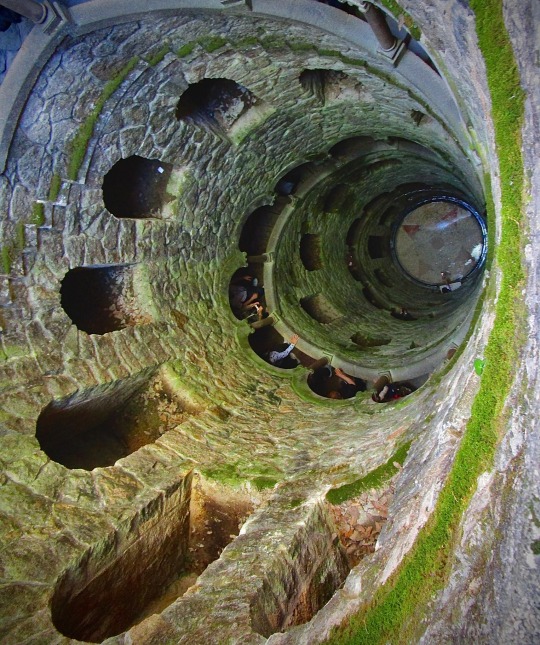
At the base, where you see the pink compass, you come to a cave with a series of tunnels that lead out of the space...eventually.
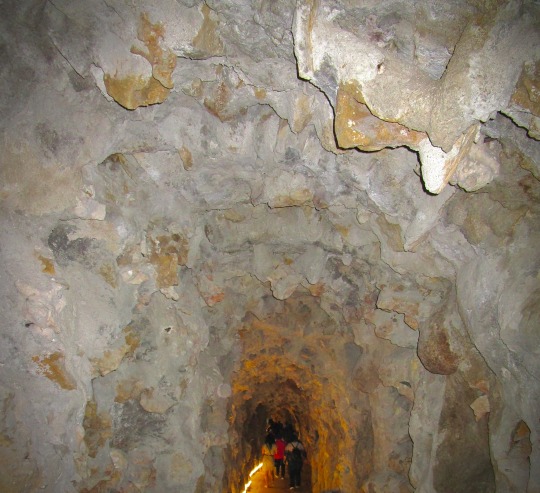
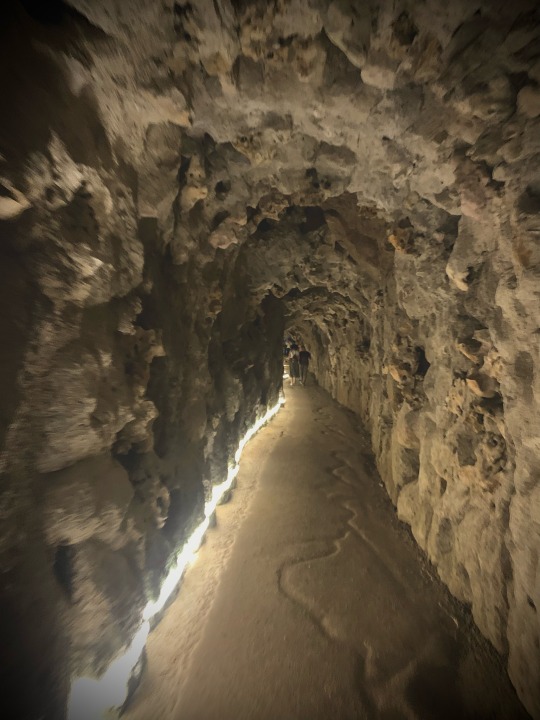
#exploring#travel#underground#quinta da regaleira#quinta de regaleira#unesco world heritage site#tourist attraction#architecture#historic architecture#stonework#initiation well#mysteries#photo#photos#photography#travel photos#travel photography#travel pics#travel pic#portugal#sintra portugal#sintra
9 notes
·
View notes
Text
youtube
The Dom Luis I bridge in the city of Porto - Portugal.
In the wonderful city of Porto the famous Luis I Bridge is located pretty much in the centre of Porto (Unesco World Heritage Site). Video shot in March 2022 by WonderJourneys Music by: Scott Buckley - Castle In The Sky
Enjoy the anime / ghibli vibe of the scenery.
Some background: In 1879, Gustave Eiffel presented a project to construct a new bridge over the Douro, with a high single deck in order to facilitate ship navigation. This project was rejected due to dramatic growth of the urban population, which required a re-thinking of the limits of a single-deck platform.
A competition was initiated in November 1880, in order to construct a double-deck metal bridge, which included projects by Compagnie de Fives-Lille, Cail & C., Schneider & Co., Gustave Eiffel, Lecoq & Co., Société de Braine-le-Comte, Société des Batignolles (which submitted two ideas), Andrew Handyside & Co., Société de Construction de Willebroek (also two projects) and John Dixon. It was in January of the following year that deliberations by the committee supported the project of Société de Willebroek and provided better-carrying capacity.
On 21 November 1881, the public work was awarded to the Belgian Société de Willebroek, from Brussels, for 402 contos. It was to be administrated by Théophile Seyrig, a disciple of Gustave Eiffel and author of the project. Seyrig had worked on the D. Maria bridge with Eiffel, hence the resemblance of his new bridge to the D. Maria bridge. Construction began on the Ponte Luís I alongside the towers of an earlier railway suspension bridge, the Ponte Pênsil, which was disassembled.
By 26 May 1886, the first weight experiments began, with the transport of a 2,000 kilograms (4,400 lb) per metre. On 30 October construction of the main arch and upper deck were concluded, resulting in its inauguration the very next day.[2] On 1 November, a toll system began to operate under the administration of the winning company, that was equal to 4 reís per person. The following year the lower deck was inaugurated, completing the project. During its ceremonies, the bridge was blessed by Bishop D. Américo.
By the turn of the century (1908) electric carriages were installed in the city centre, extending to the bridge.
#porto #unesco #travel #wonderjourneys #travel #portugal #duoro #worldheritage #unesco #iphone #tourism #ghibli style vibe
#porto#unesco#travel#wonderjourneys#portugal#duoro#worldheritage#iphone#tourism#ghibli style vibe#unesco world heritage site#wonder journeys#wanderlust#walking tour#touristplace#tourist destination#Youtube
1 note
·
View note
Text

The Nossa Senhora da Graça Fort is an eighteenth century fort in the village of Alcáçova, Portugal. Its prominent position atop Monte da Graça (Hill of Grace) made it an important stronghold during the Seven Years’ War, War of the Oranges and the Peninsular War. The fort is part of the Garrison Border Town of Elvas and its Fortifications, a UNESCO World Heritage Site.
38.894444°, -7.164167°
Source imagery: Maxar
933 notes
·
View notes
Text
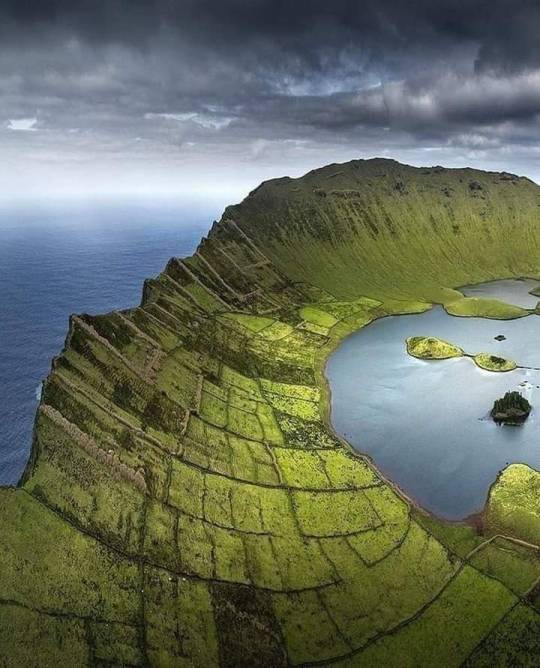
Azores islands
The Azores Islands, an autonomous region of Portugal, consist of nine volcanic islands located in the North Atlantic Ocean:
1. Geography: Situated approximately 1,360 km (850 miles) west of mainland Portugal, the islands are grouped into the Eastern Group (São Miguel and Santa Maria), the Central Group (Terceira, Graciosa, São Jorge, Pico, and Faial), and the Western Group (Flores and Corvo).
2. Volcanic Origins: Predominantly of volcanic origin, some volcanoes on the islands are still considered active. Mount Pico on Pico Island is the highest point in Portugal, rising 2,351 meters (7,713 feet) above sea level.
3. Natural Beauty: Known for their stunning landscapes, the Azores feature crater lakes, thermal springs, verdant valleys, and rugged coastlines. The islands are a paradise for nature lovers and outdoor enthusiasts.
4. Culture and History: Influenced by Portuguese, Flemish, Spanish, and Moorish traditions, the Azores boast UNESCO World Heritage Sites like Angra do Heroísmo on Terceira Island, renowned for its well-preserved architecture and historical significance.
5. Tourism: The islands attract tourists interested in activities such as hiking, whale watching, diving, and exploring volcanic caves. They offer a unique blend of adventure and relaxation in a pristine natural environment.
6. Local Cuisine: Azorean cuisine highlights fresh seafood, dairy products, and traditional dishes such as cozido das Furnas (a stew cooked underground by volcanic heat) and queijadas (cheese pastries).
The Azores Islands provide a distinct and captivating destination for travelers seeking a combination of natural beauty, cultural heritage, and outdoor adventure in Europe.
📸:karolnienartowicz
73 notes
·
View notes
Photo
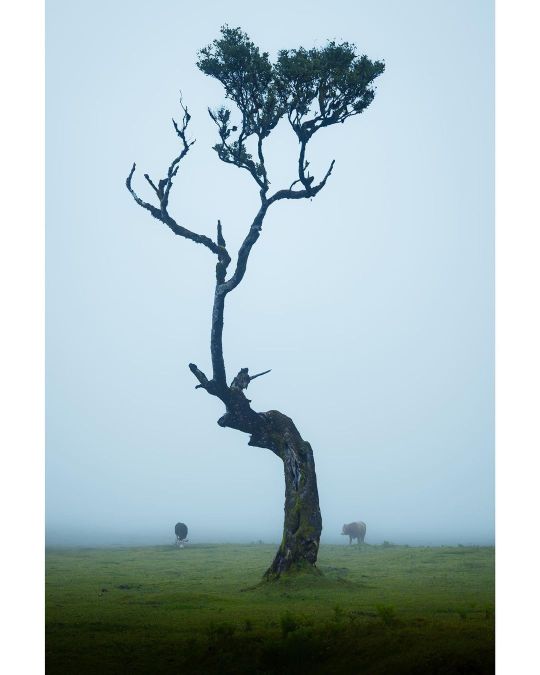
Laurisilva of Madeira 👌🏼 Best known as the Fanal Forest, this is such a unique place to explore! The forest is a UNESCO world heritage site and seeing this unusual landscape in person it’s easy to see why! These unusual trees covered large parts of Europe but they’re now found in only a handful of locations.. Madeira being one of them! Such an eerie place to visit when the fog is rolling through! Have you been here? • • #madeira #fanalforest #portugal #moody #mood #fog #eeriebeautiful #vivacmagazine #moodygrams #photography #opticalwander #discoverunder5k #madeiraisland #visitmadeira #madeiralovers #travelphotography #photooftheday #sonyshooter #ukshooters #tamron2875 #tamron #sonyalpha #a7riii #foggy #landscape #moodytoning (at Fanal) https://www.instagram.com/p/CpCanqID21E/?igshid=NGJjMDIxMWI=
#madeira#fanalforest#portugal#moody#mood#fog#eeriebeautiful#vivacmagazine#moodygrams#photography#opticalwander#discoverunder5k#madeiraisland#visitmadeira#madeiralovers#travelphotography#photooftheday#sonyshooter#ukshooters#tamron2875#tamron#sonyalpha#a7riii#foggy#landscape#moodytoning
181 notes
·
View notes
Text
Mafra
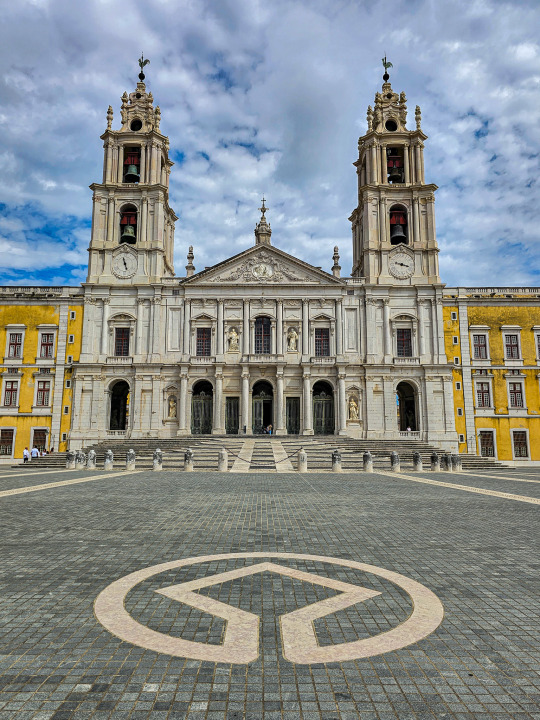
Nestled amid Portugal's picturesque landscapes lies the enchanting town of Mafra, home to one of the country's most cherished treasures - the magnificent Mafra Palace and Convent. Let's embark on a journey to uncover the allure of this UNESCO World Heritage Site.
Standing proudly at the heart of Mafra, the Mafra Palace and Convent is a breathtaking example of Baroque architecture. Constructed in the 18th century, its grandeur is evident from the moment you lay eyes on its imposing facade adorned with intricate carvings and statues, a testament to the craftsmanship of yesteryears.
Step into the palace, and you'll find yourself in the hallowed halls of the Royal Library. Housing over 36,000 rare volumes, including priceless manuscripts and first editions, this bibliophile's paradise is a testament to Portugal's rich literary heritage. Marvel at the ornate bookcases and ceiling frescoes as you immerse yourself in a world of knowledge and history.
Adjacent to the palace stands the awe-inspiring Basilica of Our Lady and St. Anthony, a true masterpiece of Baroque design. Step inside to admire the intricate gilded altars, marble sculptures, and ceiling frescoes that adorn this sacred space. The basilica's ethereal beauty is sure to leave a lasting impression on visitors.

Surrounding the palace is the lush Jardim do Cerco, a verdant oasis that offers a peaceful escape from the hustle and bustle of city life. Meander through manicured lawns, vibrant flower beds, and shady groves as you bask in the tranquility of this botanical haven.
Beyond its architectural splendors, Mafra is steeped in cultural heritage, which is celebrated through its vibrant festivals, delectable cuisine, and local artisan crafts. Don't miss the opportunity to savor the flavors of traditional Portuguese dishes and explore the charming streets dotted with quaint shops and cafes.
Mafra's designation as a UNESCO World Heritage Site is a testament to its historical significance and architectural beauty. Whether you're a history buff, an art enthusiast, or simply a traveler in search of beauty and tranquility, Mafra promises an unforgettable experience that will linger in your heart long after you've departed.🏰🇵🇹
#mafra#historic#city#town#architecture#travel#europe#portugal#culture#cultural#unesco#world heritage
11 notes
·
View notes
Text
Porto is Portugal's second largest city and the capital of the Northern region, and a busy industrial and commercial centre. 🇵🇹 The city isn't very populous, but the Porto metropolitan area has some 2 million inhabitants in a 50-km radius. The city is built at the high ground overlooking the Douro River estuary's northern side. Porto's historical centre was declared a UNESCO World Heritage Site in 1996.
January 26 2023
60 notes
·
View notes
Text
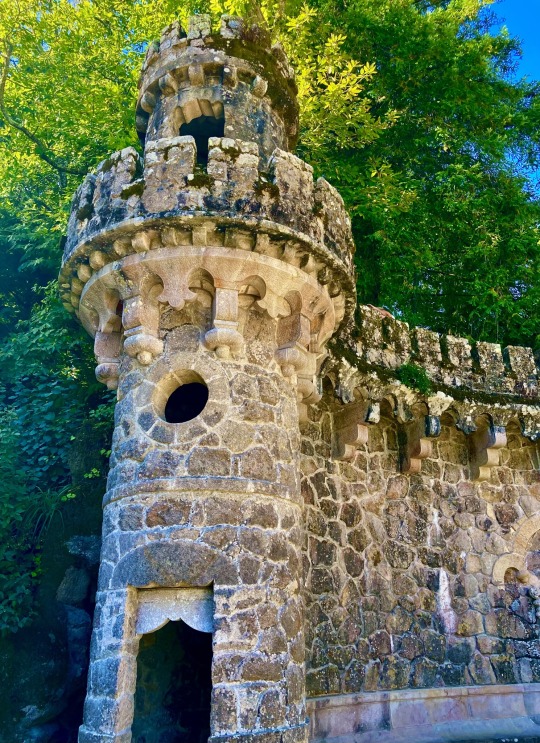
Quinta de Regateira Garden, UNESCO World Heritage Site, Sintra, Lisbon Region, Portugal, EU, 27 September 2022.😎
#original photography on tumblr#utahphotographer#snapshot#phtotographers on tumblr#landscape#hiking#wanderlust#landscape photography#hikingphotography#wanderer#hikingadventures#outdoorphotography#naturephotography#mountainphotography#landscapephotography#natural light#trekking#skyline#portugal#lisbon#sintra#garden#luxurydestination#luxuryliving#travelphotography#architecturephotography#architecture#hike#hikingtrip#hikingtrail
97 notes
·
View notes
Text
Welcome to Évora, a hidden gem tucked away in the heart of Portugal. This enchanting city is a UNESCO World Heritage site and is known for its well-preserved medieval architecture, rich history, and vibrant culture. Join me as we embark on a journey to discover the top attractions and must-see sights in Évora.
#travel#trip#adventure#voyage#wanderlust#traveller#travelling#traveling#blog#blogger#travel europe#solo travel#travel blog#travel destinations#travel photography#travelgram#blogspot#blogging#blogs#bloggingcommunity#vacations#vacation#holiday#portugal#evora
2 notes
·
View notes
Text

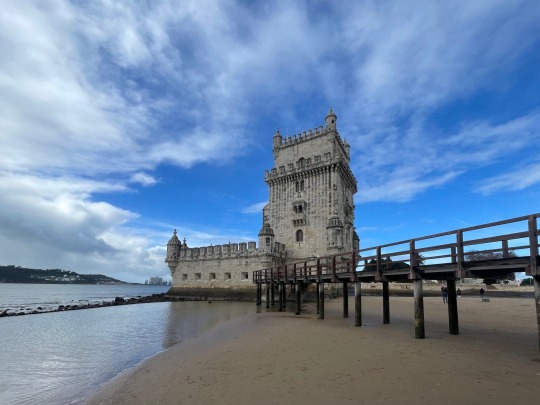
.
Torre de Belém
We took a chance and went to Belem tower hoping we will at least see it between shower... and we did, but because of the inclement weather we couldn't visit the inside.
Officially the Torre de São Vicente (Tower of Saint Vincent) is a 16th-century fortification that served as a point of embarkation and disembarkation for Portuguese explorers and as a ceremonial gateway to Lisbon. This tower symbolizes Portugal's maritime and colonial power in early modern Europe. It was built during the height of the Portuguese Renaissance, and is a prominent example of the Portuguese Manueline style. Since 1983, the tower has been a UNESCO World Heritage Site, along with the Jerónimos Monastery.
5 notes
·
View notes
Photo

Évora
32 notes
·
View notes
Text
Mistaken Point
The prompting for this week’s blog post involves reflecting on the following quote.
There is no peculiar merit in ancient things, but there is merit in integrity, and integrity entails the keeping together of the parts of any whole, and if these parts are scattered throughout time, then the maintenance of integrity entails a knowledge, a memory, of ancient things. …. To think, feel or act as though the past is done with, is equivalent to believing that a railway station through which our train has just passed, only existed for as long as our train was in it.
(Edward Hyams, Chapter 7, The Gifts of Interpretation)
What I believe Hyams was referring to with this quote is not that ancient things do not hold value, but that they are only valuable in context. This made me consider a visit to the UNESCO World Heritage site at Mistaken Point in Newfoundland and the implications of historical and scientific context.

Trail to Mistake Point UNESCO World Heritage Site, photo by author.
To get to the Mistaken Point UNESCO site one follows a long and winding road from the Edge of the Avalon Interpretive Centre in Portugal Cove South. At the interpretive centre we were assigned a guide, paid our fees and given a pair of socks to wear. The socks they said were for when we got to the fossil site. We park at a small dusty parking lot where there are outhouses. It doesn’t really look like much, though the scenery is beautiful in the rugged coastal way that Newfoundland is known for. There are small streams that trickle under the dirt road, grassy knolls all around, and you can see the ocean. If you are lucky, like the day we visited - the sun will be shining and whales will play in the bay as you walk the trail to the fossil site. I say lucky because Mistaken Point gets its name from the fact that, in bad weather (which is often), sailors can confuse Mistaken Point for nearby Cape Race. The sailors would turn north, expecting to find Cape Race Harbour, but would instead run into rocks. This repeated mistake led to 94 shipwrecks between 1864 and 1904. (Groat, 2019)

Fossil bed site at Mistake Point, photo by author.
The rocky shores are made up of large flat pans of rocks, they are fun to climb and jump on. Within the tilted and cleaved sequence of mudstones and sandstones are fossils of the oldest, large, complex life-forms found anywhere on Earth. Known to scientists as the Ediacara biota, these creatures lived from 580 to 541 million years ago, when all life was in the sea. (Government of Newfoundland and Labrador [Gov NL], 2024). When we got to the site after a 3km hike, we were asked to take off our shoes, put on the provided socks. We were allowed to walk on the rocks where the fossils were, we were even allowed to touch them. It was incredible to feel the impressions of creatures that lived before animals had evolved to develop skeletons.

Close Up fossils at the Mistaken Point site, photo by author.
What makes me consider Hyams is that these incredible fossil beds of Mistaken Point were known to local hunters and residents of nearby communities in the 20th century. It is said that children playing on the exposed beds would comment on the ‘flowers in the rocks’. (Gov NL, 2024) The tour guide told us that folks used to picnic on top of the site without knowing what the impressions were. These fossils were not scientifically appreciated until in 1967, when Shiva Balak Misra, with his field assistant Paul Thompson, were mapping Precambrian rocks along the coastline, discovered the fossil beds and realized their enormous significance. This was the first record of an Ediacara-type fauna from the Western Hemisphere. (Gov NL, 2024) It took another two decades before the Newfoundland government protected the site in 1987 (Groat, 2019) and another three decades after that before in 2016 the site was declared a UNESCO World Heritage Site. (Gov NL, 2024)
Without context, knowledge, history of these fossils they would be little more than pretty rocks on a shoreline.

Whale sighting on the day of the hike, photo by author.
References:
Government of Newfoundland and Labrador. (2024). Mistaken Point Ecological Reserve and UNESCO World Heritage Site. Retrieved on February 14, 2024 from https://www.gov.nl.ca/ecc/natural-areas/wer/r-mpe/
Groat, C. (2019, October, 16). Mistaken Point. The Canadian Encyclopedia. Retrieved on February 14, 2024 from https://www.thecanadianencyclopedia.ca/en/article/mistaken-point
#ENVS3000 #ecology #mistakenpoint #unesco
2 notes
·
View notes
Photo










Belém, Lisbon
Jerónimos Monastery (Portuguese: Mosteiro dos Jerónimos) – located along the Praça do Império (Empire Square), across from the Padrão dos Descobrimentos (Monument to the Discoveries), it was originally built to support pilgrims who travelled in the region by Henry the Navigator; expanded and elaborated from 1501 by architects for King Manuel I of Portugal to serve as a resting-place for members of the House of Aviz; and as a church for seafearing adventurers who embarked during the Age of Discovery, after Vasco da Gama's successful voyage to India. Construction was funded by a tax on eastern spices, and over time came to represent Portuguese historical discoveries, becoming over time a national monument and UNESCO World Heritage Site, housing (in addition to the religious art and furniture from its past) artefacts and exhibitions like the Museu Nacional de Arqueologia (National Archaeological Museum) and the Museu da Marinha (Maritime Museum) within its walls.
Source: Wikipedia
#Belem Lighthouse#Jerónimos Monastery#Belém Tower#Farol de Belém#Museum of Popular Art#architecture#cityscape#original photography#travel#Hieronymites Monastery#Vasco da Gama's Armada by Rigo 23#Monument to Overseas Combatants#Padrão dos Descobrimentos#vacation#tourist attraction#landmark#Southern Europe#Lisboa#Lisbon#Portugal#Belém
24 notes
·
View notes